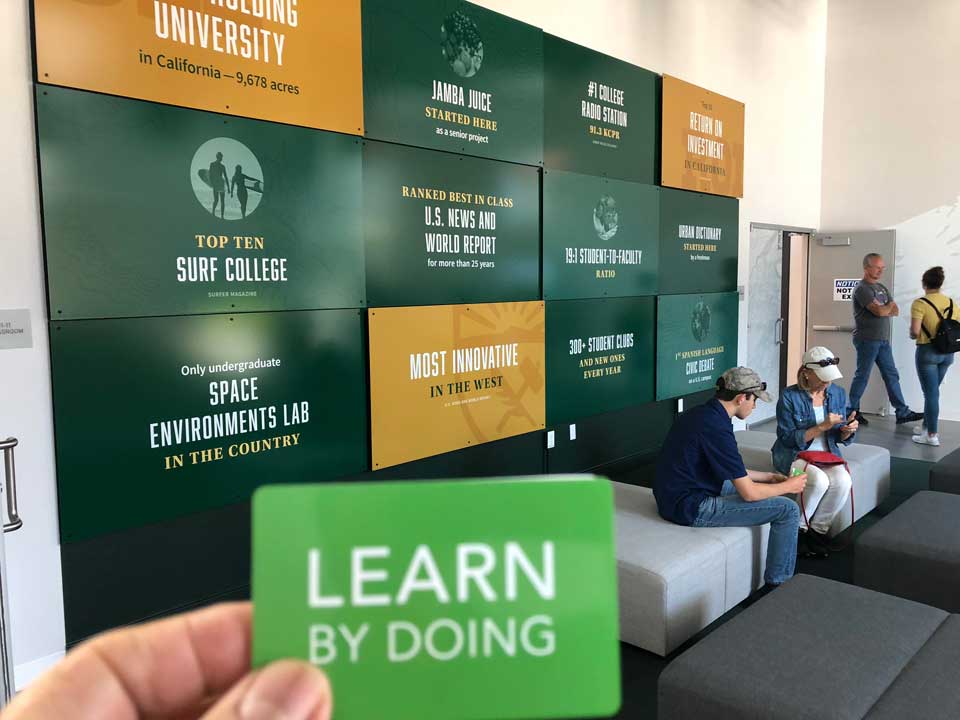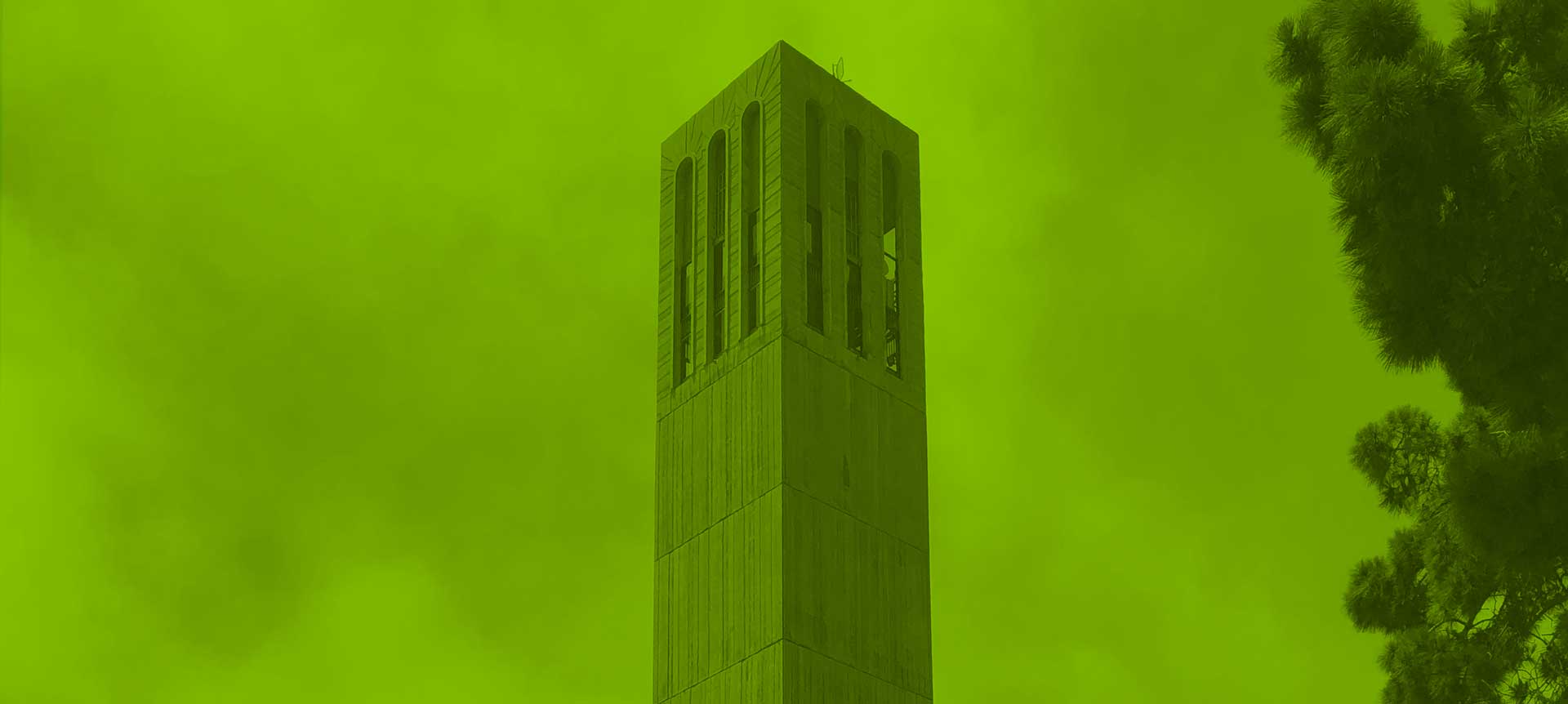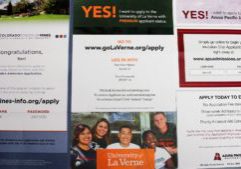I'm in the middle of campus tour season so I'm experiencing quite a few higher ed brands. Each school pitches their brand experience differently, whether it's explicit or implicit, and as a brand practitioner I've become accustomed to seeing the difference very quickly.
To define my terms: an explicit pitch is constructed, deliberate and considered. It usually announces itself with a tagline or slogan, maybe a new logo or brandmark, and is often packaged in a comprehensive campaign. An implicit pitch comes across quieter, assumes that you already know something about the school, but really is just unfocused. Often it just means that there's no deliberate brand there, just a collection of facts, nice pictures, and a few notable alumni.
One of the things I try to remember when I experience a higher ed brand is I don't know where a particular school is on their brand journey – what I see and feel might be the last echos of the old brand with a new one in development, just waiting to be launched. One hopes.
I encountered both kinds of brands last week during a campus tour trip with my daughter, who is attempting to eliminate some of the 20-30 schools on her list by visiting the ones that can be visited during a short trip. So we headed north to visit a couple of schools above LA that initially seemed very similar.
First stop: we'll call this one School A. I knew a little about this school from being a lifetime CA resident with kids who have friends who are attending, and some who regretted not getting in. Yes, it's a notorious party school. But it's also a well-regarded school, known nationally and an aspirational choice for prospective students.
We did the info session – top level facts, semi-famous alumni, number of Nobel laureates; then application details, housing, etc.. Grabbed the brochures and fact sheets. Next, the walking tour with a bright-eyed undergrad, doing the walking backward trick for miles, all the while answering questions, telling stories, revealing anecdotes, dropping facts and figures. We had the brand experience the school prepared for us.
But after the session and the tour, I didn't feel it.
Knowing vs. Feeling
Yes, infographics displaying the average post-graduation salary were shown, and yes, the campus sells itself for many students. But why choose this university over others? After establishing that it's a relatively well-known, prestigious school, what elevates it above other schools with a similar reputation? I couldn't tell you.
This is the perfect example of an implicit brand: it assumes that when presented with the details, their audience will assemble the brand for themselves from the available components.
This university's distinctive vision is still a mystery to me. How does a school with these gifts and resources not have an effective pitch? This is the perfect example of an implicit brand: it assumes that when presented with the details, their audience will assemble the brand for themselves from the available components. How would a school with an explicit brand do it differently?
I found the answer about 90 miles north.
The Vision Thing
School B is almost a carbon-copy of School A. About the same size and about the same reputation, although in many fields like Engineering I believe School B has the edge. School B is not as scenic, being inland about 10 miles, but still a beautiful campus in a beautiful part of the state. Cost of attendance, acceptance rate, admission profile all very similar. But I left that campus wanting my daughter to attend, and hoping her aspiration to attend School A had cooled.
Why? On paper and by the numbers, the schools are very similar.
The biggest difference between school A and school B? I left School B knowing exactly what they do, why they think it's important, and how they accomplish it. I knew what their distinctive difference was because they'd thought about it for a long time, and developed not just a slogan but the entire approach to educating students that came well before the brand. Their mantra is shared with their partner school in the system and has been used for years, but they'd just launched a new campaign to place it front and center of their brand experience. They had a vision, and they created a brand experience around it.
And I fell for it, hard.

Now, maybe the brand and campaign doesn't resonate with everyone – certainly the school is taking heat for the fees paid to consultants who produced the campaign – but it worked for me. It worked because it's simple, direct, and expresses the school's purpose, is deliberate about how it wants to be perceived, and, perhaps most importantly, is based on a shared belief about what the school does well. Their brand is authentic, backed by decades of practice, understood by all. I know what type of experience I'll get at this school. They have used their legacy to develop an effective, simple campaign to communicate with more clarity what their community already knew about them.
It was, well, explicit.
The Takeaways
1. Understand what you're good at
If you don't know what your school does well, then you have a discovery project in your immediate future. Ask your community. They know.
If you know, make sure your community agrees with you because A) they've experienced it and B) they've heard you tell them.
If you can check box A) but not B), you're halfway there. Get to work on a brand communications plan.
2. Be deliberate about what you want your prospective students to takeaway
In my first example above, the school failed because it didn't assemble the brand components it had to construct a compelling, compact message.
It instead left it to the audience to assemble, like a snap-together model with the parts left on the tree and missing instructions.
Students and parents don't have time to assemble your brand for you, especially since they're consuming messages from dozens of schools simultaneously. They need clarity. And your clarity tells them something else: that you know how to do this. That gives them confidence that their investment in you is well-placed.










